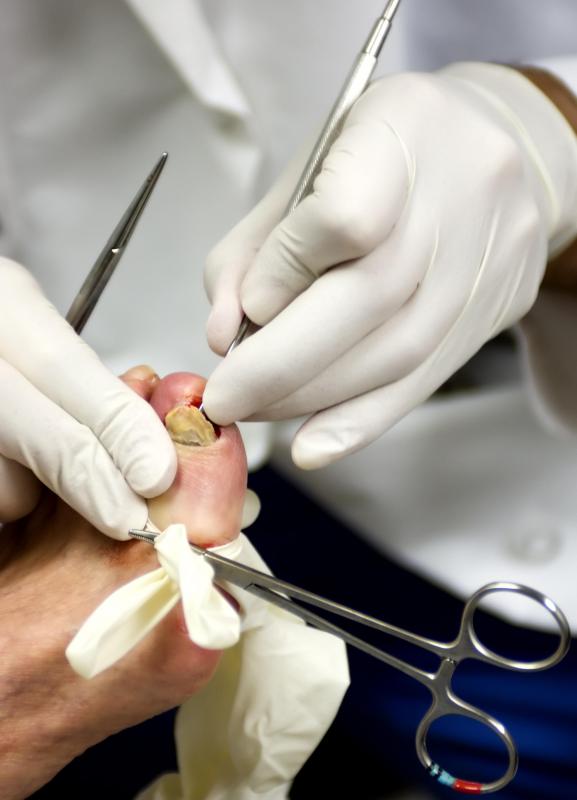At WiseGEEK, we're committed to delivering accurate, trustworthy information. Our expert-authored content is rigorously fact-checked and sourced from credible authorities. Discover how we uphold the highest standards in providing you with reliable knowledge.
What Is Anonychia?
When a person is missing one or more fingernails or toenails, the condition is technically called anonychia. This can occur through simple trauma, infection, or by diseases that have genetic causes. There are cases of anonychia in which all of the nails are absent, but these are rare. Anonychia, as a term, comes from two Greek words. "Onyx" means nail, and "a" means without.
Generally, medical professionals use the term anonychia for congenital diseases, which occur when a baby develops abnormally. The term may not be necessary to describe a nail that a patient tore out in an accident. As well as traumatic injury, certain fungal infections can disrupt the environment beneath the nail to such an extent that the nail falls out.

A baby with a congenital disease may either carry one defective gene that usually is involved in nail development, or it can carry two defective genes. When one defective gene causes an absence of nails, then the gene is dominant, as the healthy copy of the gen e does not control the effects of the defective one. Two defective genes that would not produce problems if present as one single copy cause recessive disease.

There are several different diseases that can include missing nails as a symptom. One example is DOOR, or Deafness, Onychodystrophy, Osteodystrophy, and Mental Retardation syndrome. This syndrome, in which all four conditions are present, is extremely rare and produces many varied symptoms. This can include a complete absence of fingernails or toenails. Some people with the condition do have nails, but they are underdeveloped in comparison to normal nails.
Another condition known as Iso-Kikuchi syndrome can also affect the nails of those suffering from the disease. In this case, a patient typically has underdeveloped or missing nails on the index fingers. Nails on the thumb and middle finger can also be affected.
Ellis-van Creveld syndrome is another genetic disease that can cause a lack of fingernails or toenails. This particular syndrome primarily affects the bones of the body, which in turn affects the nail growth. Nail-patella syndrome is another inherited bone condition that can result in missing kneecap bones and nails. Some other conditions that show nail loss, such as epidermolysis bullosa, in which a patient's main symptom is fragile and blistering skin, primarily cause nail loss through sloughing of skin.
AS FEATURED ON:
AS FEATURED ON:












Discuss this Article
Post your comments